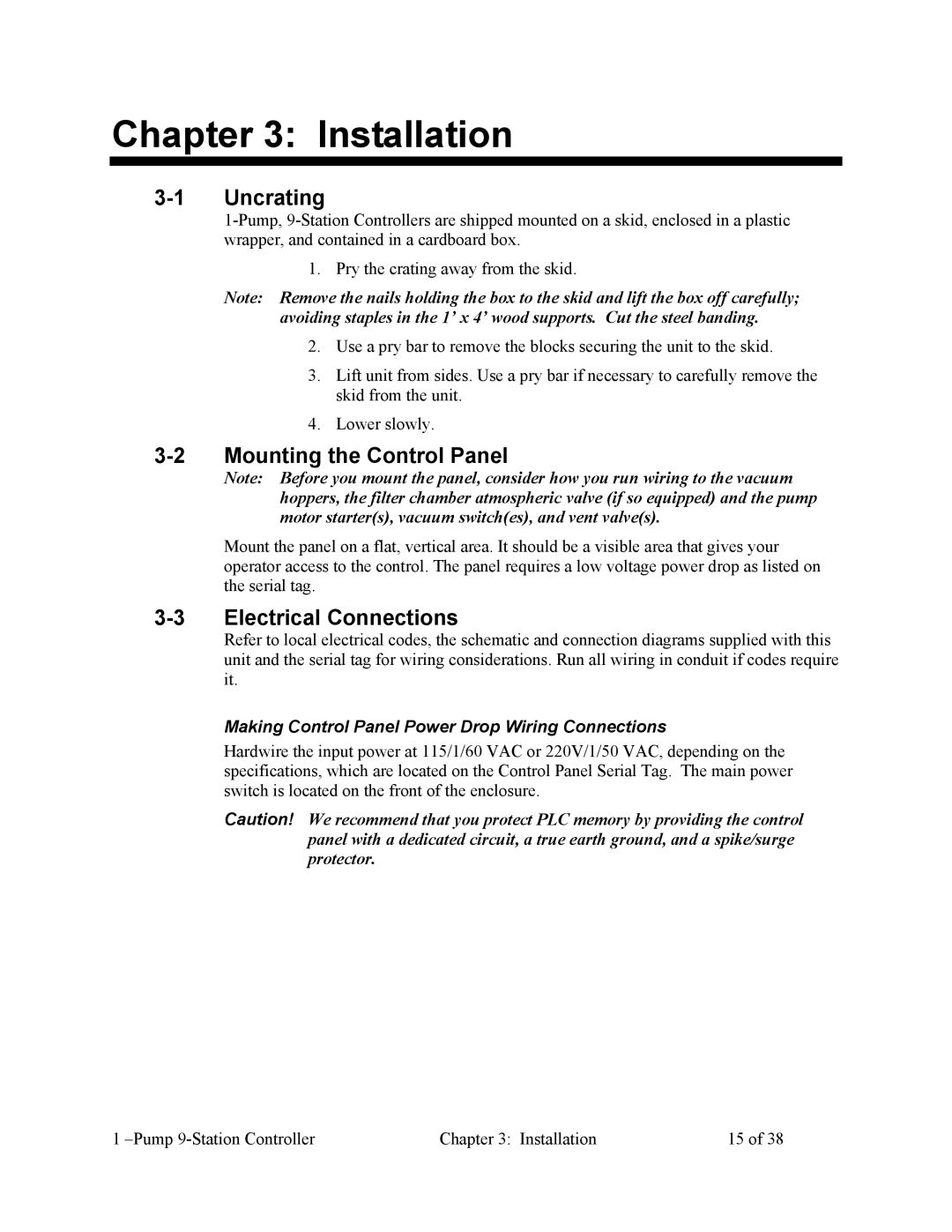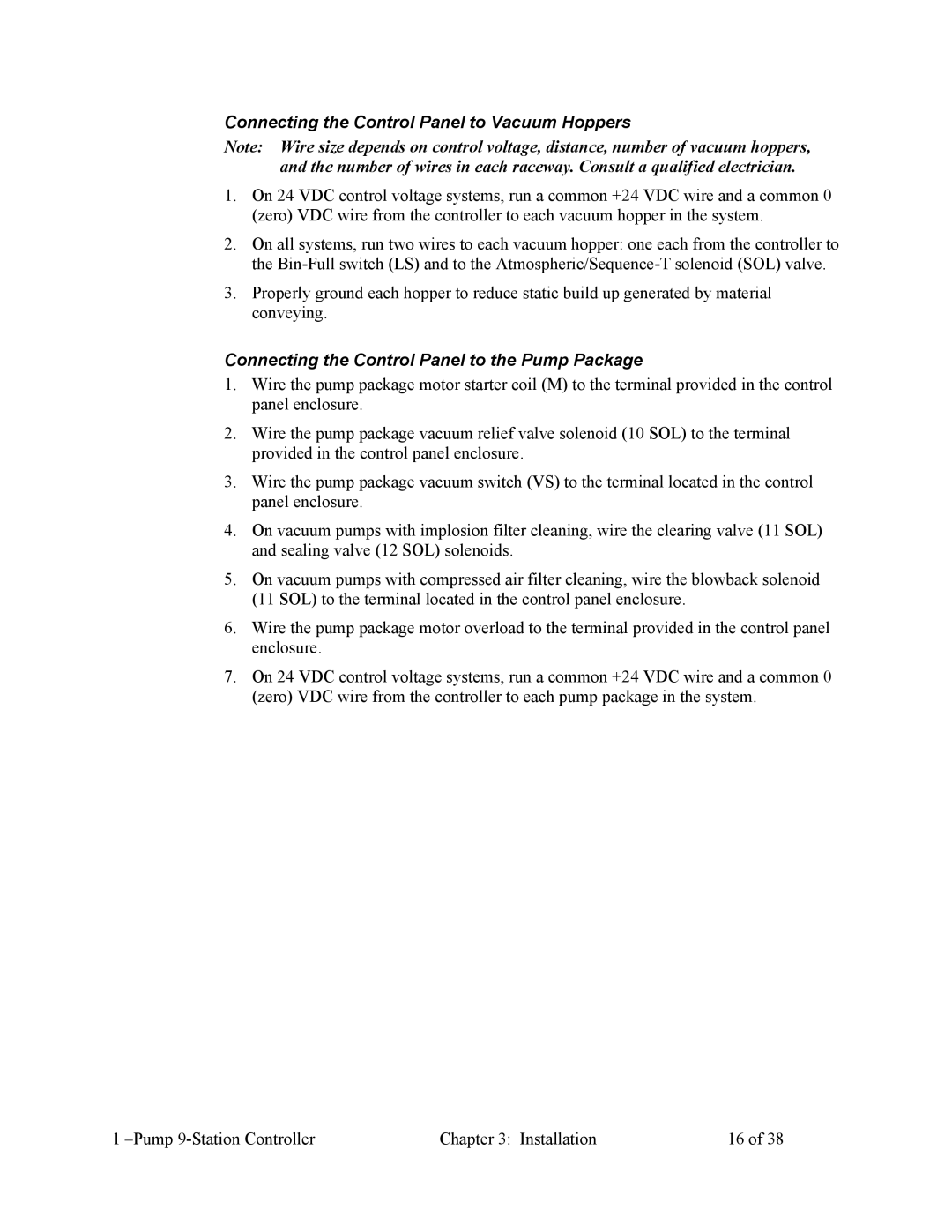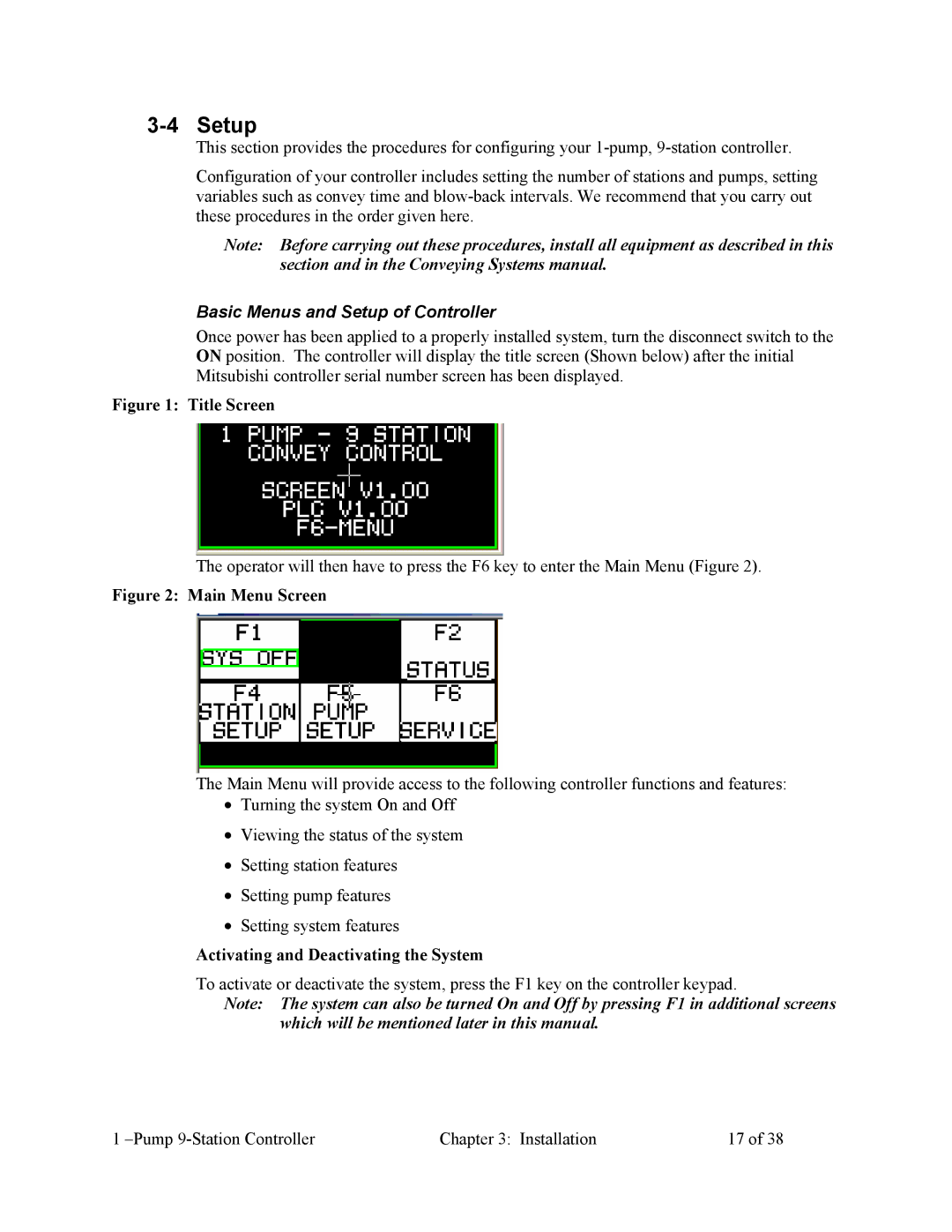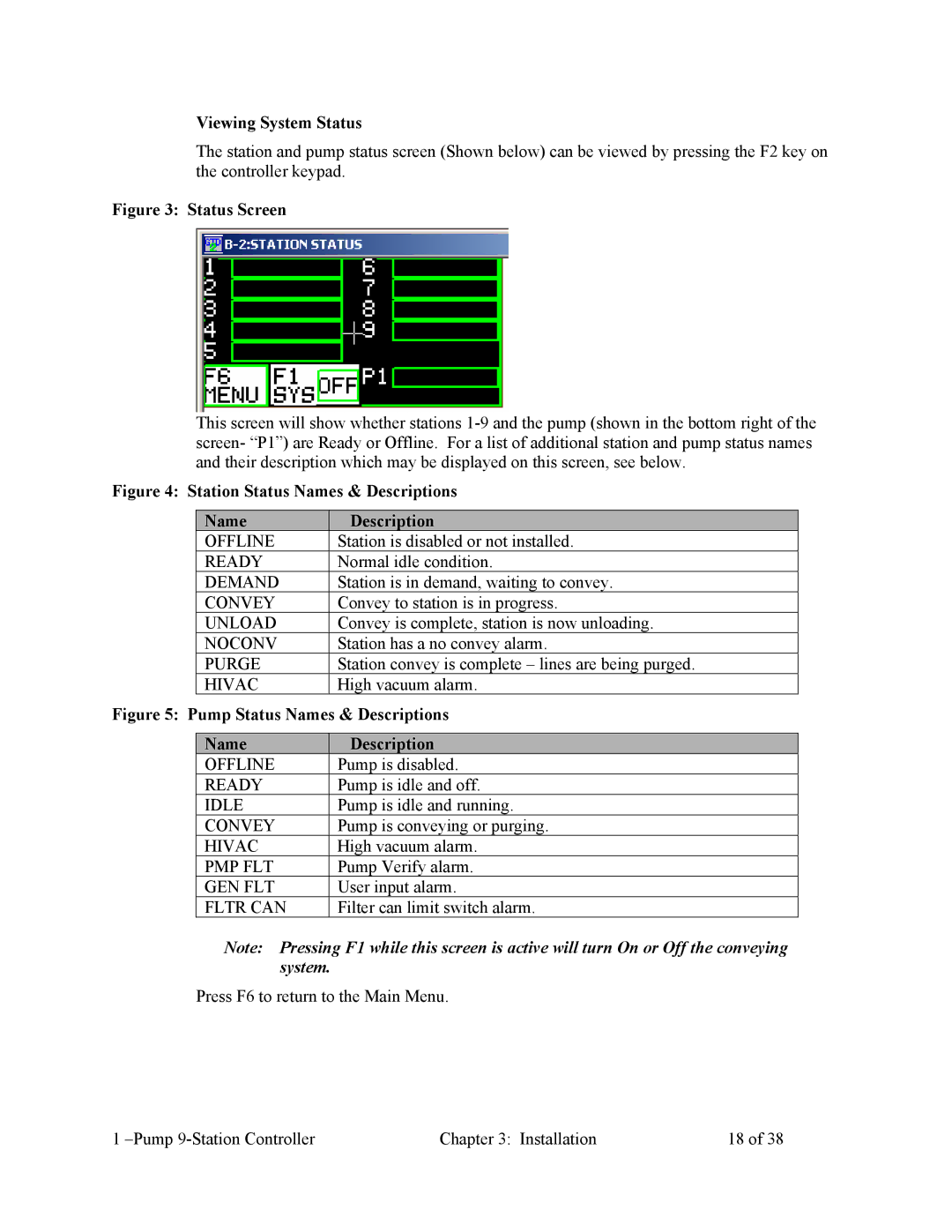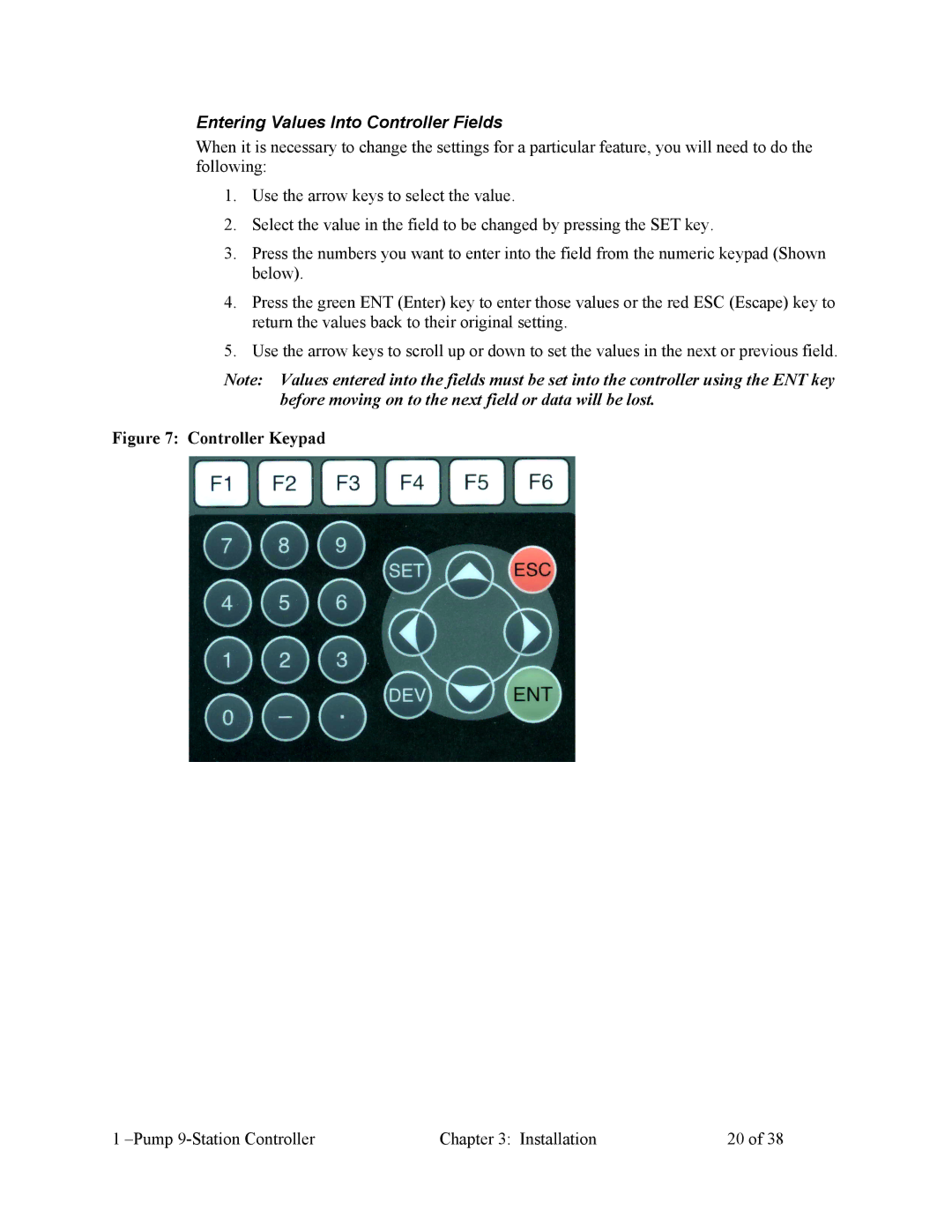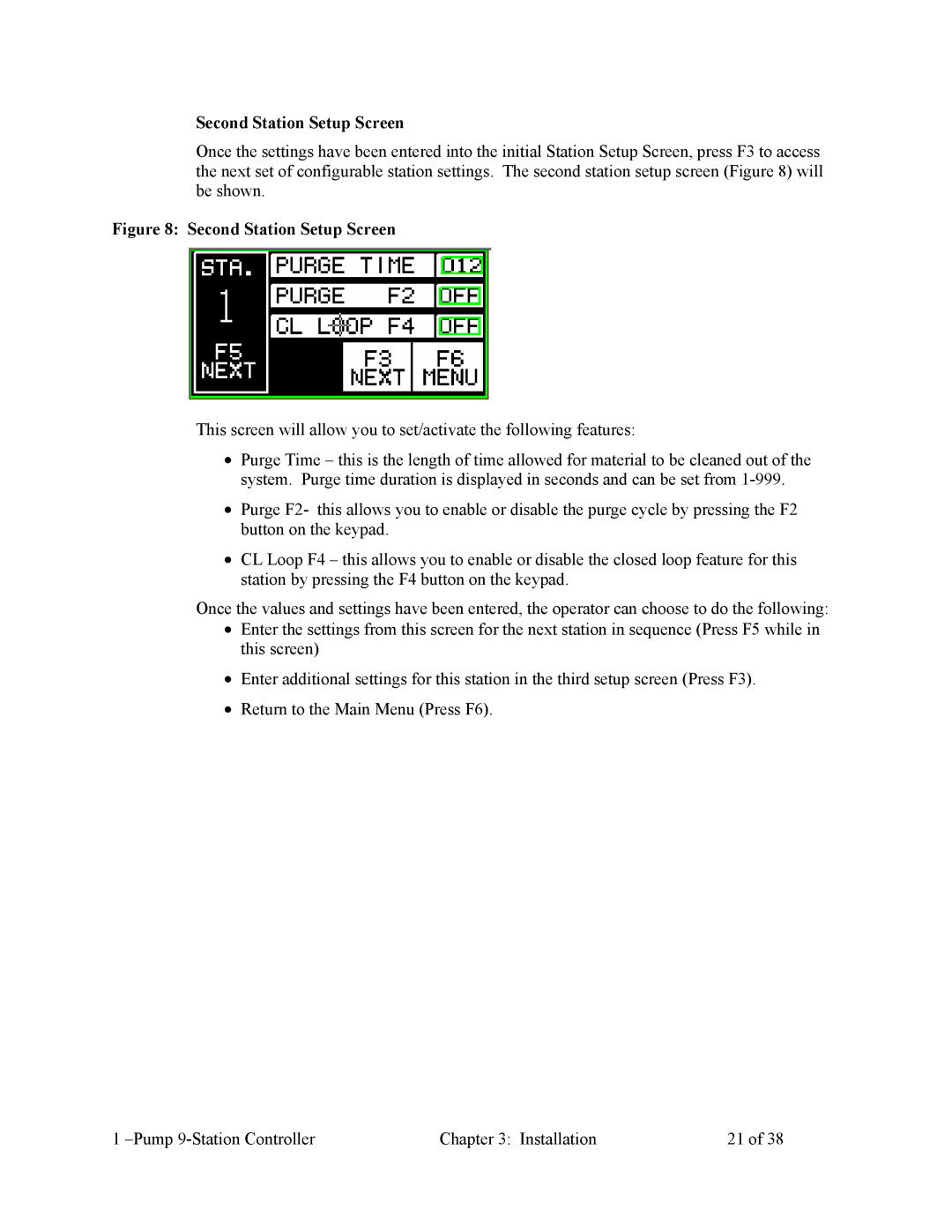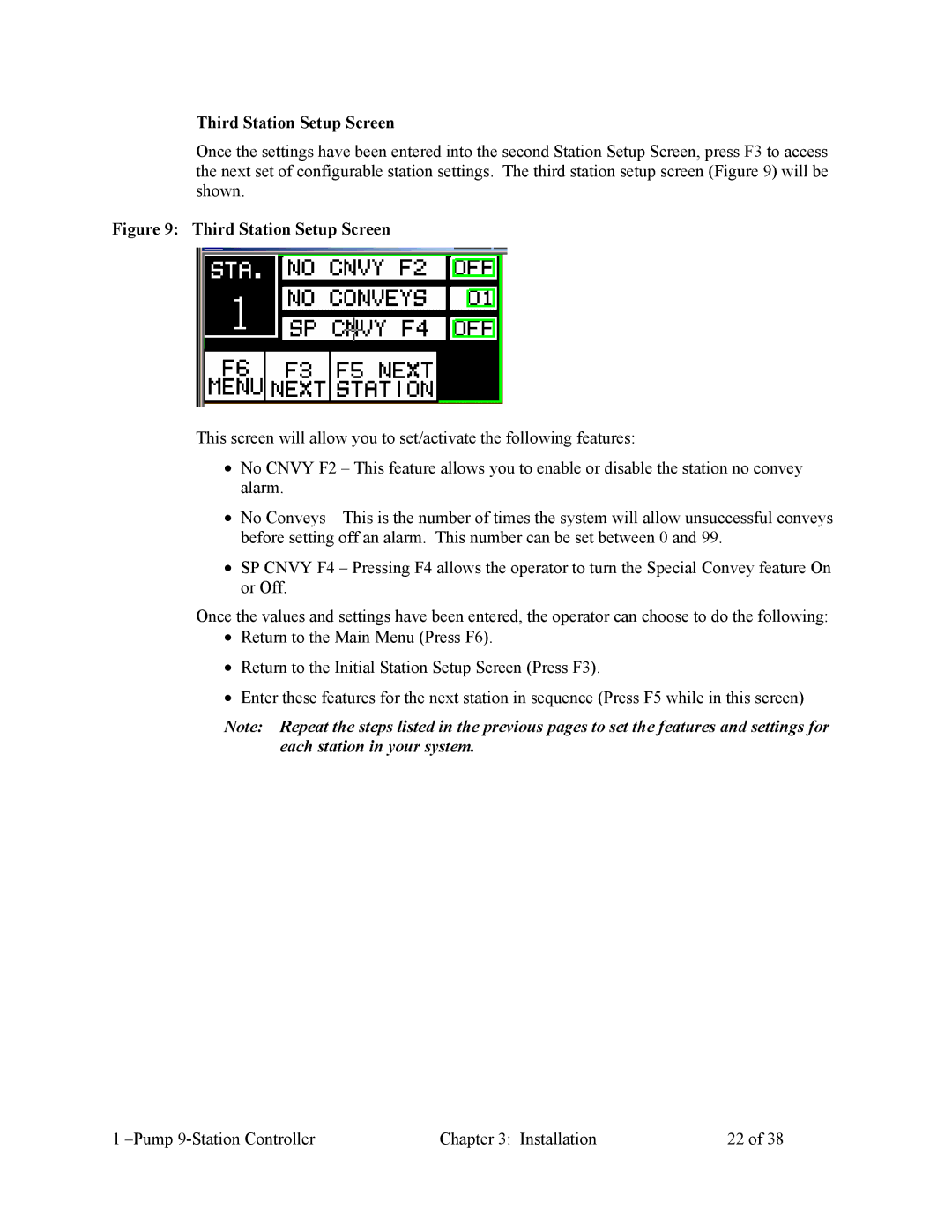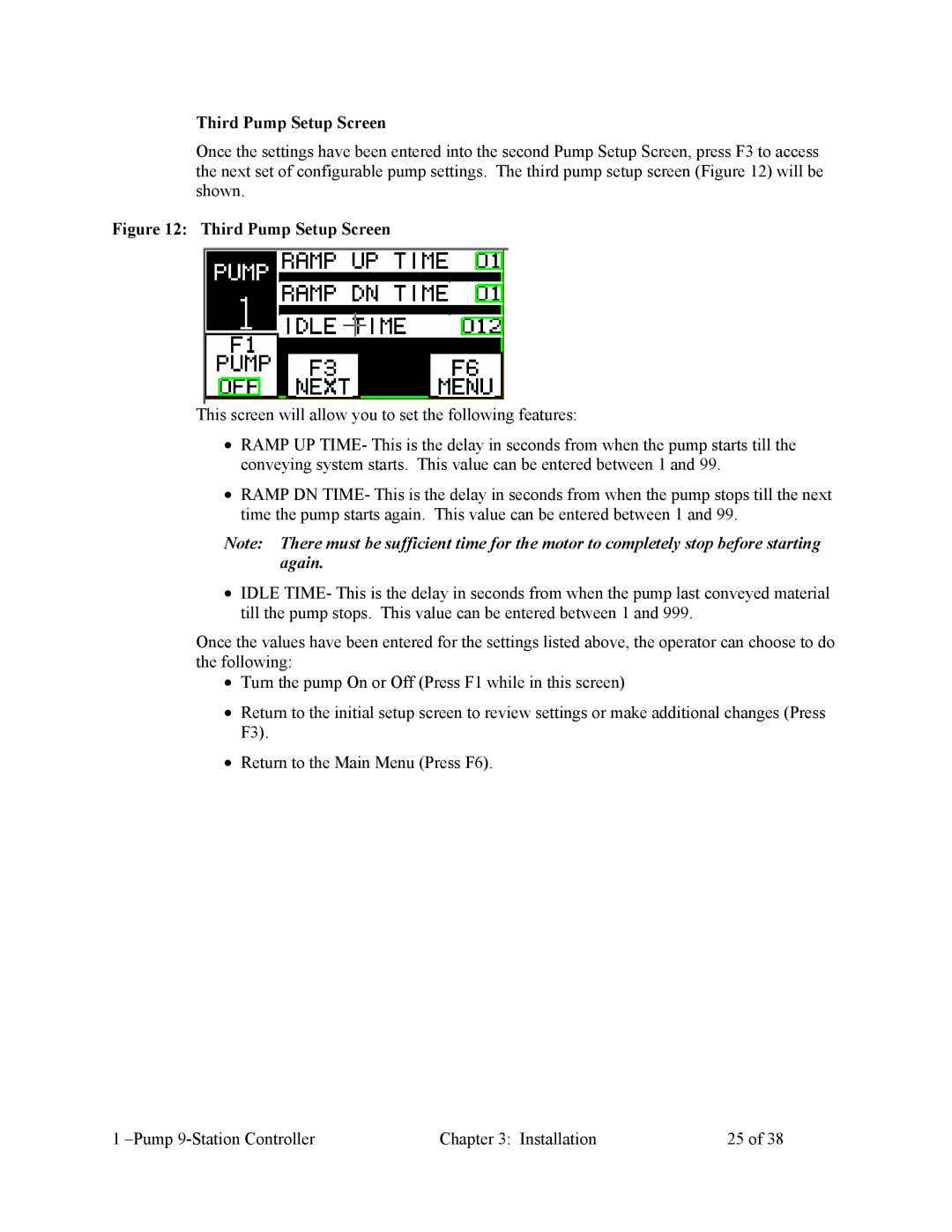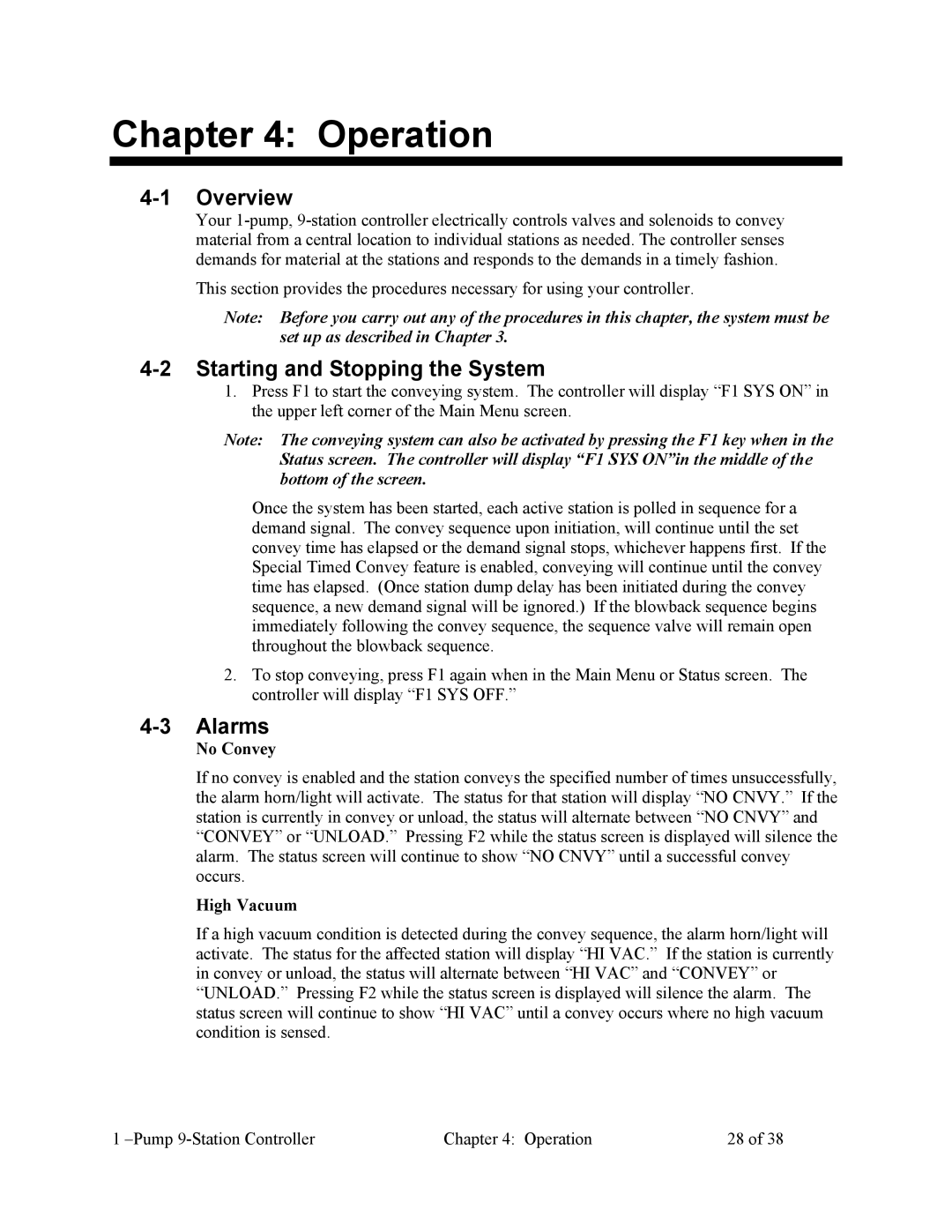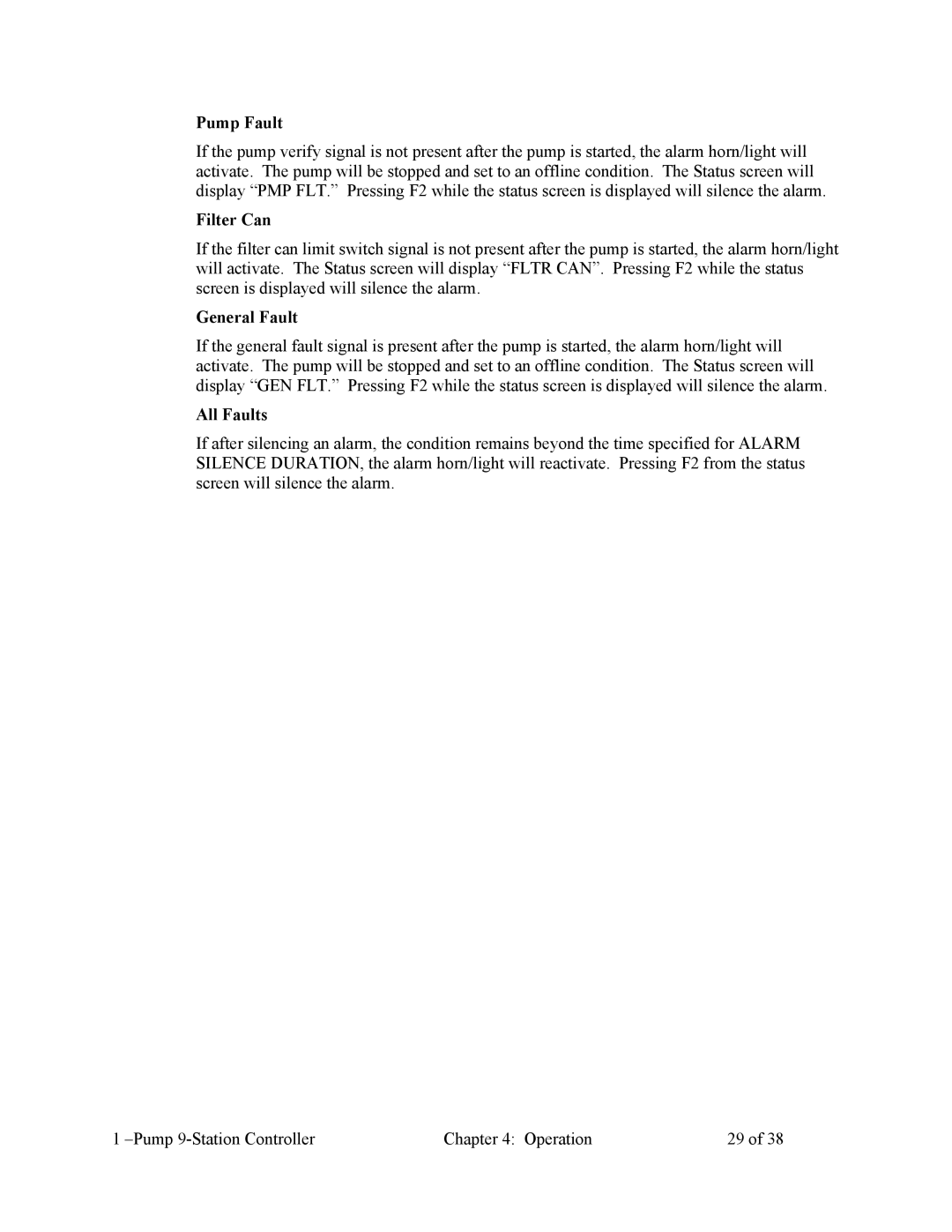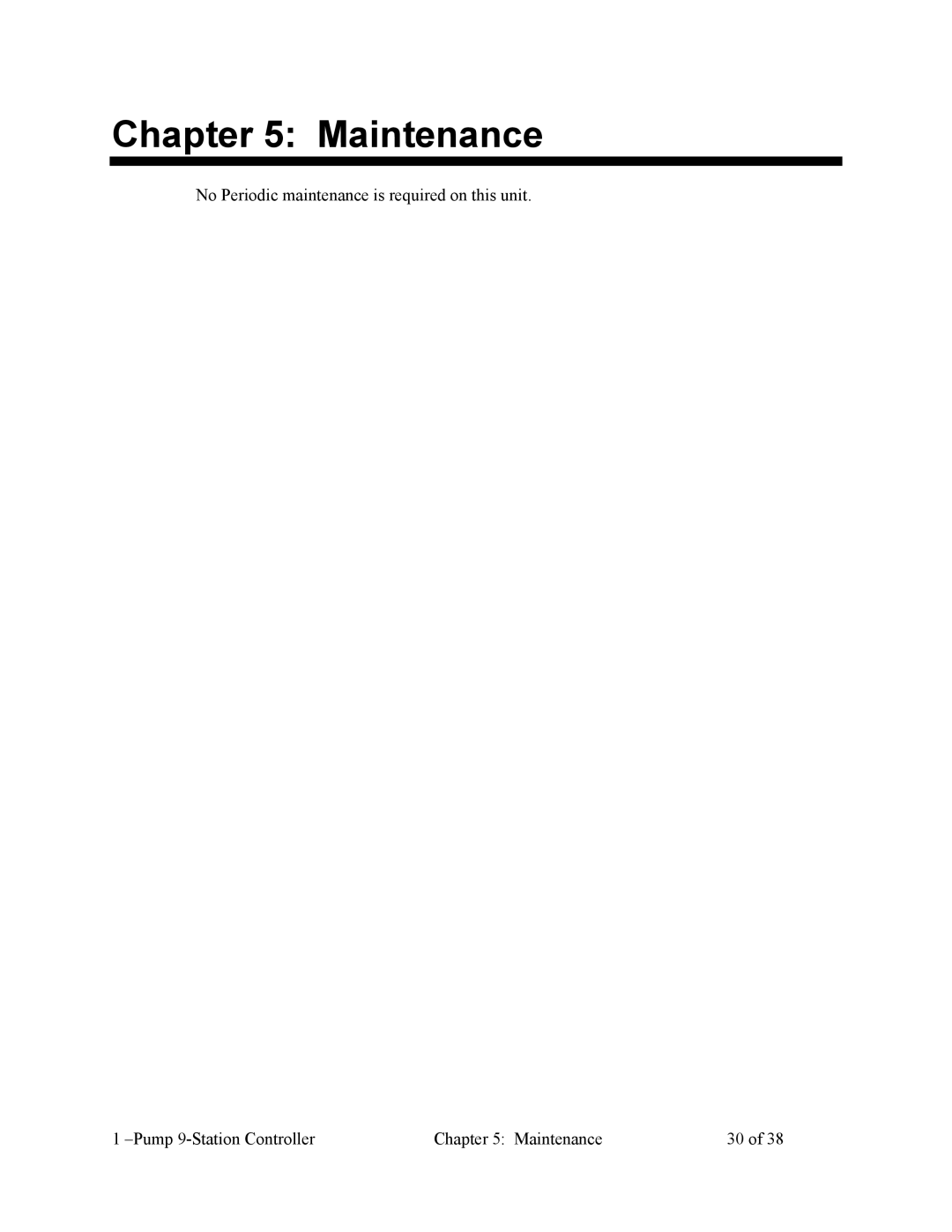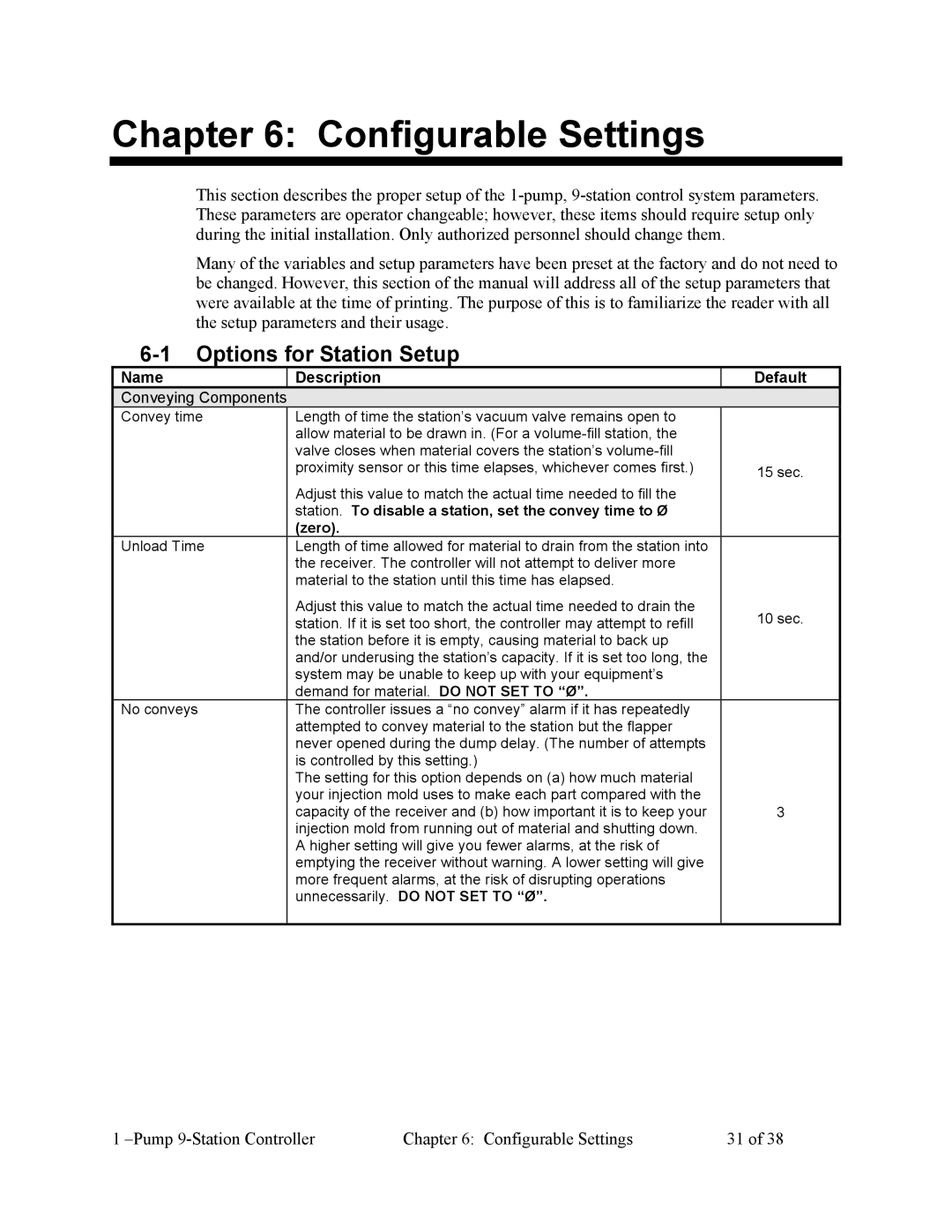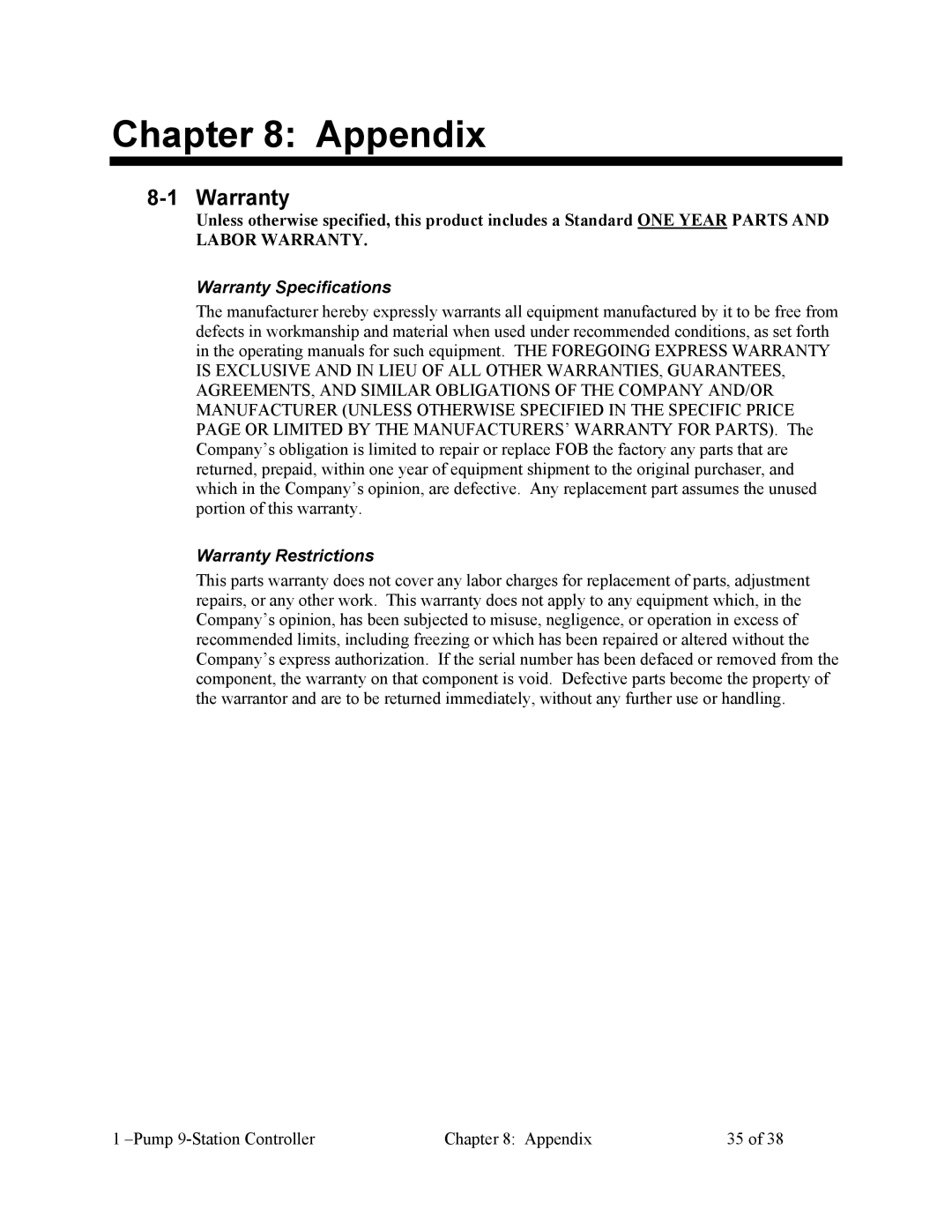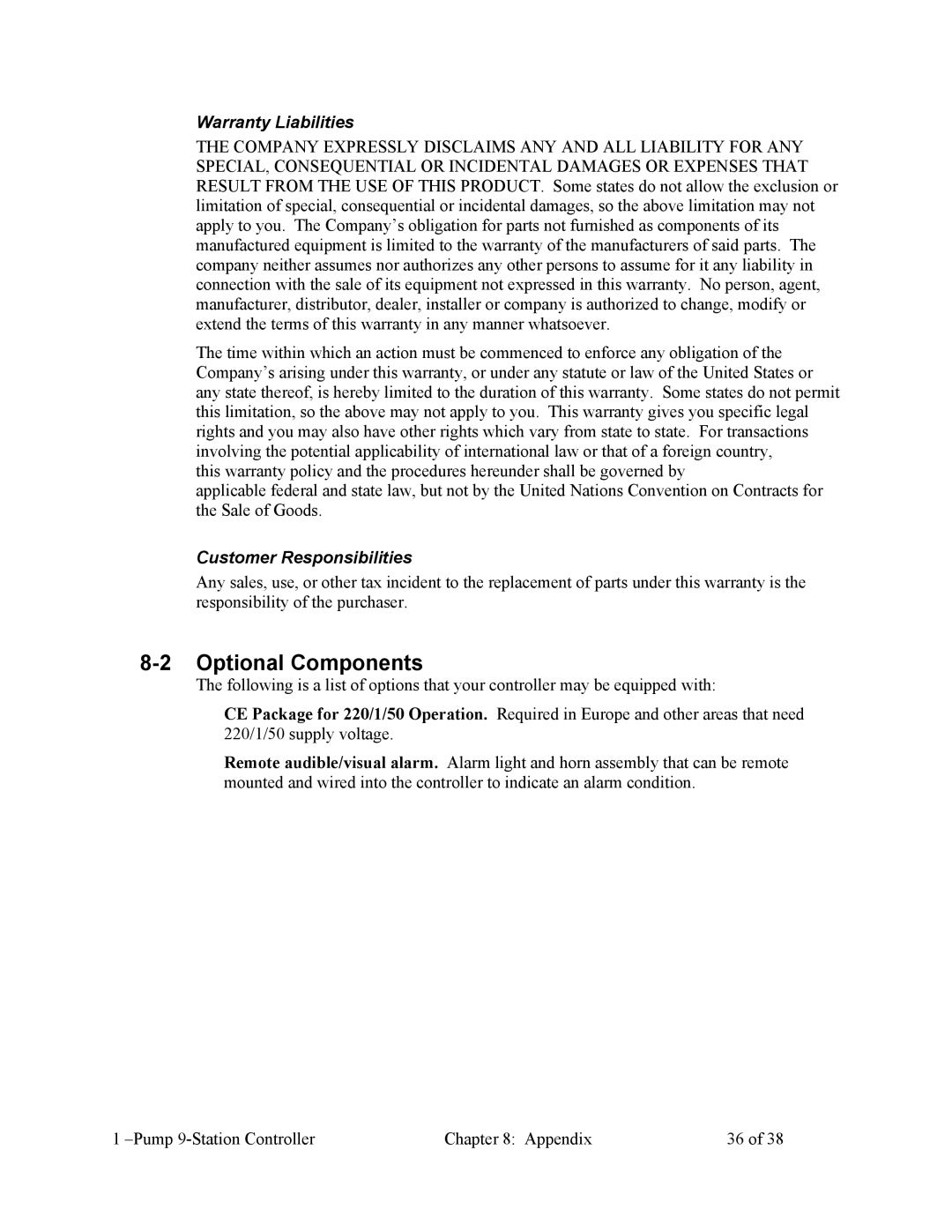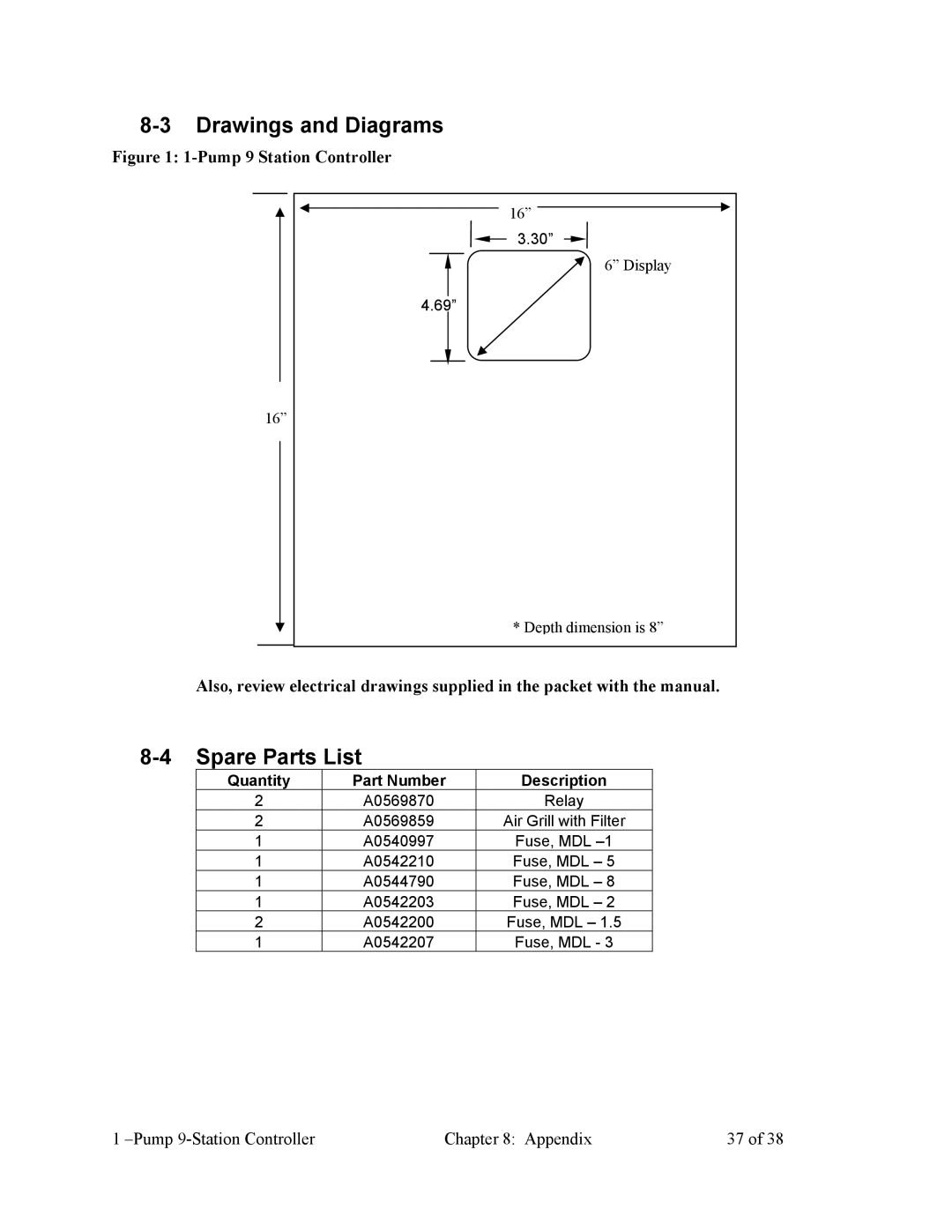7-2 Alarms
The format for all station alarms is “Station n [alarm text],” for example, “Station 9 receiver low level.” The format for all pump alarms is “Pump n [alarm text].” Any alarm that does not start with “Station” or “Pump” is a system alarm.
The following tables list all alarms alphabetically, together with possible causes. A “critical” alarm is one that causes the affected device to stop.
Note: You can also see a list of alarms and their causes in the controller’s online help. To display this information, touch the color key of statuses in the upper
Station Alarms
Alarm message | Possible cause |
| Material line is blocked. |
| Vacuum line is blocked. |
High vacuum | Convey time is too long |
Sequence valve has malfunctioned. | |
| Vacuum switch has malfunctioned. |
| Note: After you have corrected the cause of this alarm, the alarm will be |
| cleared when the controller has conveyed a full load to this station. |
| Material container is empty. |
| Material line is disconnected from material source. |
No convey | Vacuum line is disconnected from station. |
| Convey time is too short. |
| Note: As a stopgap measure, you can disable the “no convey” alarm for |
| this station until the problem can be remedied. |
Pump Alarms
Alarm message | Possible cause |
Pump failure | Circuit breaker or overload protector has tripped. |
(Critical) | Contactor has malfunctioned. |
1 | Chapter 7: Troubleshooting | 34 of 38 |
